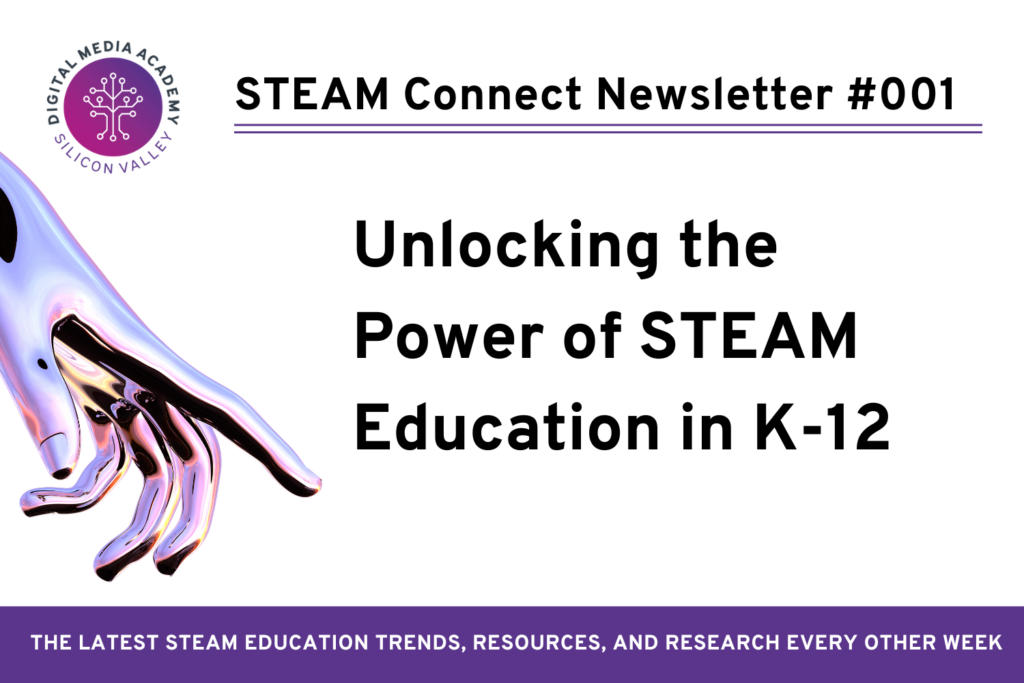In today’s fast-paced and rapidly changing world, it’s more important than ever for students to have a well-rounded STEAM education that prepares them for the future. In the past, educators had longer lead times that allowed us to adapt to new technologies and job markets gradually. However, in today’s world, changes are happening at an unprecedented pace, and the skills needed for 21st-century success are evolving just as quickly.
As such, it’s critical that students receive an education that equips them with the skills and knowledge they need to succeed in the future. In this article, we’ll explore the benefits of STEAM education and why it’s essential for today’s students.
Table of Contents
What is STEAM?
STEAM is an educational approach to learning that integrates science, technology, engineering, arts, and math.
It builds on the principles of STEM education by adding the “A” for “Arts”. This addition allows students to explore creative thinking, aesthetic design, and expression in addition to the critical thinking skills emphasized in STEM education. The integration of arts also encourages students to think outside the box and develop innovative solutions to real-world problems.
STEAM education emphasizes problem-solving, critical thinking, creativity, and collaboration skills through practical, hands-on activities. By including the arts, STEAM education provides a well-rounded, holistic approach to learning that prepares students for the technological and scientific demands of the future while also fostering their artistic and creative abilities, providing students with the skills and knowledge they need to succeed in today’s rapidly changing job market.
The Importance of STEAM Education
1. It Develops Critical Thinking and Problem-Solving Skills
One of the key benefits of STEAM education is that it helps students develop critical thinking and problem-solving skills. In a world where technology is changing rapidly and the job market is increasingly competitive, these skills are more important than ever. Through STEAM, students learn how to identify problems, creatively evaluate potential solutions, and implement effective strategies.
2. It Prepares Youth for Future Careers
Another important benefit of STEAM education is that it prepares students for future careers. Many of the fastest-growing and highest-paying jobs today are in fields like technology, engineering, and math. By focusing on these areas, STEAM education helps students develop the skills and knowledge they need to succeed in these careers. It also promotes creativity and innovation, which are essential skills for success in any field.
3. It Encourages Creativity and Innovation
By integrating the arts into the curriculum, STEAM education encourages creativity and innovation. Students are given the opportunity to explore their creative side and develop new ideas. This is essential for developing the next generation of entrepreneurs and innovators.
Remember, the Macintosh was not just a technological breakthrough but also a beautifully designed product that incorporated innovative design elements such as a graphical user interface and a mouse. The design was inspired by Steve Jobs’ study of calligraphy, which he had taken in college, and his belief that the computer should be more than just a functional tool, but also a work of art.
4. It Promotes Teamwork, Collaboration, Diversity, and Inclusion
STEAM fields have traditionally been male-dominated, but by promoting STEAM education to all students, regardless of gender or race, we can help to break down these barriers and create a more diverse and inclusive workforce.
Many STEAM projects require students to work together in teams to solve complex problems. By doing so, students learn how to communicate effectively, resolve conflicts, and work towards a common goal. encourages diversity and inclusion.
Bonus: 6 Tips for Implementing STEAM
If you’re interested in implementing STEAM education in your school or classroom, here are a few tips to keep in mind:
Start Small
Don’t feel like you need to overhaul your entire curriculum all at once. Start small by introducing STEAM activities into your existing lessons. For example, you could have students design a bridge using math and engineering principles.
Use Real-World Examples
Try to make the STEAM activities as relevant and engaging as possible. Use real-world examples to help students see how the skills they’re learning can be applied in the real world.
Emphasize Hands-On Learning
One of the key features of STEAM education is that it emphasizes hands-on, project-based learning. Try to incorporate as many hands-on activities as possible to keep students engaged and motivated.
Collaborate with Other Teachers
STEAM education often requires collaboration across multiple subject areas. Collaborate with other teachers in your school to create interdisciplinary projects that incorporate STEAM principles.
Embrace Failure
It’s important to embrace failure as a natural part of the learning process. STEAM projects can be challenging, and not every idea will work out. Encourage students to learn from their mistakes and keep trying until they find a solution that works.
Join the Leading STEAM Schools in the World
The Leading STEAM Schools in the World (LSSW) membership program is designed for schools that are committed to providing high-quality STEAM education to their students. Members of LSSW have access to a range of benefits, including curriculum consulting, professional development opportunities, and the opportunity to collaborate with other like-minded institutions around the world.
Conclusion
As the world changes at an unprecedented pace, it’s crucial we keep up to provide students with a well-rounded education that future-proofs their skills.
STEAM education is a vital part of this equation, as it ignites creativity, critical thinking, and problem-solving skills in students through an interdisciplinary approach. By embracing STEAM education, educators can prepare students for success in the future job market.
Share Post



